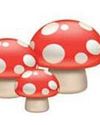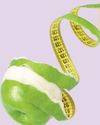CATEGORIES
Kategoriler

THESE LITTLE-KNOWN BANK ACCOUNTS ALLOW AMERICANS WITH DISABILITIES TO SAVE AND INVEST
Paul Safarik, 32, of Lincoln, Nebraska, has worked in the food industry since he was 21, delivering for quick service restaurants like Raising Cane's and stocking groceries at stores like Trader Joe's. With his earnings, Safarik, who has Down syndrome, recently bought a treadmill to stay active when the weather's bad and helped cover the cost of braces for his teeth.

ROBOT UMPIRES ARE GETTING THEIR FIRST MLB TEST DURING SPRING TRAINING
A computerized system that calls balls and strikes is being tested during Major League Baseball spring training exhibition games starting Thursday after four years of experiments in the minor leagues.

APPLE DROPS ENCRYPTION FEATURE FOR UK USERS AFTER GOVERNMENT REPORTEDLY DEMANDED BACKDOOR ACCESS
Apple said it will stop offering an advanced data security option for British users after the government reportedly demanded that the company provide backdoor access for any data those users have stored in the cloud.

INDONESIA LIFTS IPHONE 16 BAN: APPLE'S $1.5 BILLION DEAL SEALS THE MARKET
Indonesia finally greenlit iPhone 16 sales this week, reversing an October 2024 ban after Apple inked a $1.5 billion investment deal.

AMAZON'S NEW AI-POWERED ALEXA PROMISES TO BE YOUR 'BEST FRIEND IN A DIGITAL WORLD' FOR A MONTHLY FEE
Amazon this week unveiled a generative-AI infused Alexa that it says will allow the popular voice assistant to have more personality, check a user's tone and even plan romantic dates.

APPLE ANNOUNCES $500 BILLION INVESTMENT IN US AMID TARIFF THREATS THAT COULD AFFECT THE IPHONE
Apple announced this week that it plans to invest more than $500 billion in the United States over the next four years, including plans to hire 20,000 people and build a new server factory in Texas.

GOOGLE MAPS ROLLS OUT ADS: $11 BILLION REVENUE PUSH BEGINS
Google Maps flipped the switch on ads globally this week, launching a monetization drive on February 19, 2025, that Alphabet hopes will rake in $11 billion annually.

CONNECTICUT LAWMAKERS BACK PROHIBITION ON STATE AGENCIES AND LOCAL GOVERNMENTS USING FOREIGN DRONES
Connecticut lawmakers passed emergency legislation prohibiting state agencies and municipalities from purchasing or using Chinese and Russian drones while also imposing restrictions on where drones can be operated in the state.

TOP APPLE EXEC CONCEDES HE HAD DOUBTS ABOUT APP STORE FEES IMPOSED ON ALTERNATIVE PAYMENT OPTIONS
Longtime Apple executive Phil Schiller this week conceded he initially opposed fees that the iPhone maker charges for in app-transactions processed outside its own payment system because he feared violating a court-ordered mandate designed to create more competition.

AMAZON EXPANDS DRONE DELIVERY TO 10 U.S. CITIES: AWS FUELS LOGISTICS
Amazon took flight this week, expanding its Prime Air drone delivery to 10 U.S. cities on February 21, 2025, powered by AWS artificial intelligence.

WASHINGTON POST OWNER JEFF BEZOS SAYS OPINION PAGES WILL DEFEND FREE MARKET AND 'PERSONAL LIBERTIES'
The billionaire owner of The Washington Post, Jeff Bezos, narrowed the topics covered by its opinion section Wednesday to defending personal liberties and the free market, a pivot away from its traditional broad focus and prompting the news outlet's opinion editor to resign.

M4 MACBOOK AIR LOOMS: SPRING LAUNCH RUMORS HEAT UP POST-IPHONE 16E REVEAL
Apple's iPhone SE 4 dropped February 19, 2025, but the rumor mill's already churning-next up might be an M4 MacBook Air, slated for a March reveal.

MICROSOFT'S COPILOT+ PCS HIT SHELVES: WINDOWS 11'S AI LEAP FORWARD
Microsoft kicked off this week by shipping its latest batch of Copilot+ PCs, powered by an Al-enhanced Windows 11 update, marking a significant step in its push to make artificial intelligence a cornerstone of everyday computing.

APPLE'S $500 BILLION U.S. BET: INSIDE THE HOUSTON MANUFACTURING HUB
Apple dropped a bombshell this week, announcing a $500 billion investment in U.S. infrastructure over the next four years, with a shiny new manufacturing hub in Houston at its heart.

C1 Modem
A GROUNDBREAKING REVOLUTION PAVING THE WAY TO APPLE'S FUTURE

GO AHEAD. ORDER THE MEAT LOAF.
Sure, the burger might be the safer bet. But when you learn to weigh the benefits of new options versus familiar standbys, the big decisions (about work, about life, about diner food) become a whole lot easier.

MY DILL-IANT FRIEND
How two men, three decades apart in age, found fitness and healing in pickleball—and in their friendship.

WHAT THE MAHA PSYCHEDELIC PUSH MEANS FOR YOUR MIND
Plant-based, mind-altering drugs are taking center stage in public health debates. Our go-to psychiatrist breaks down what's real about the new momentum behind psychedelics for mental health.

THE SECRET BEHIND SUPERSHOE SPEED
ONE WEEK BEFORE the 2018 New York City Marathon, Olympian Jared Ward received a package from Saucony, his shoe sponsor. Inside were three early prototypes of what eventually became Saucony's first super shoe, the Endorphin Pro 1.

What's Luck Got to Do with It?
Longevity in Hollywood can be elusive unless you're Angela Bassett. With a smart new series that puts her in the Oval Office and a summer blockbuster on the horizon, she delivers a master class in both elegance and endurance.

The Idol of Restraint
Jewelry designed by Tina Chow rarely comes up for auction-because no one wants to part with it. Her legacy, however, can be spotted more often. If you know where to look.

The Cult of BACK PAIN
Membership in this highly undesirable club comes with its own lingo, syllabus, and gurus and now its very own antihero.

No Shrinking VIOLET
For a certain woman, this iconic scent has become as much an everyday wardrobe staple as her Cartier Tank and her Hermès scarf.

5 MYTHS ABOUT FRUIT
Even the earth's most nutritious treats have been battered and bruised by Internet misinformation. Take a bite of these juicy truths.

SPRING-CLEAN YOUR HABITS
CHECK OFF THE ONES YOU WANT TO ADD TO YOUR DAILY ROUTINE.

Mad About LEOWOODALL
Leo Woodall, the 28-year-old star of One Day and The White Lotus, has cornered the market on a very particular species of onscreen love interest—the guy who's so sweet and dreamy that there's got to be a catch, right? Now he's the May to Renée Zellweger's December in Bridget Jones: Mad About the Boy.

The White Lotus Effect
Viewers of popular shows are \"set-jetting\" to the locales where they filmed.

YOU KEEP THE CHANGE, I'LL TAKE THE HARDWARE
The entry in my training log from that day reads: \"Patching the tire may have been harder than the marathon itself.\"

YES, YOU CAN WALK DURING A RACE
WHEN I STARTED racing, I thought I had to run every step of every race.

ART NOUVEAU
Look to the great masters for your spring makeup inspiration.